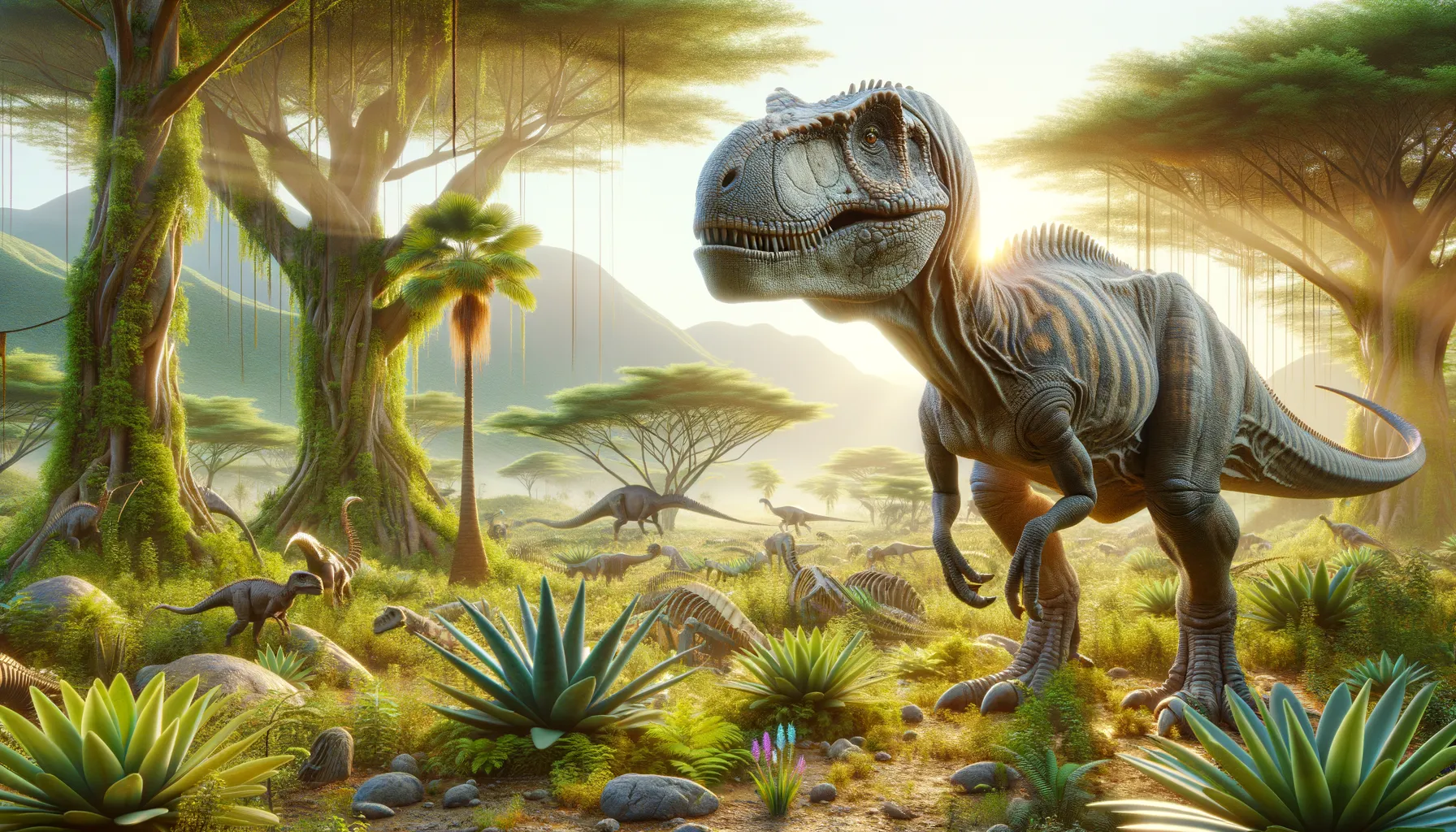
Koshisaurus
Silent grazers of the ancient world
Period
Cretaceous
Length
Measured about 6 meters long.
Height
Stood around 2 meters tall.
Weight
Approximately 500 kilograms.
Koshisaurus was a dinosaur that roamed the earth during the Cretaceous period. Discovered in Asia, it was a herbivorous species known for its moderate size and cumbersome gait. Its fossils have provided insight into the varied dinosaur fauna of its time, offering a glimpse into the dynamics of its ecosystem. Koshisaurus had a unique skeletal structure, indicative of its evolutionary adaptations.
Diet
Koshisaurus was herbivorous and mainly fed on plants. It likely consumed a variety of vegetation available in its environment, which helped maintain its energy levels for survival.
Hunting
Being a herbivore, Koshisaurus did not hunt. It foraged for plants and shrubs, ensuring it remained on the lookout for predators while feeding.
Environmental challenges
Koshisaurus faced various environmental challenges, including habitat changes due to shifting climate patterns. Its survival depended on finding ample food sources and escaping from predators. Seasonal variations may have led it to migrate in search of better grazing lands. The competition for resources with other herbivorous species was another challenge it had to navigate.
Speed
Koshisaurus was relatively slow.
Lifespan
Estimated around 70 years.
First discovery
First discovered in Japan.
Fun Facts
- Koshisaurus is named after the Koshihikari rice from Japan's Fukui Prefecture, highlighting its discovery location.
- This dinosaur lived during the early Cretaceous period, around 120 million years ago.
- Koshisaurus was a small herbivorous dinosaur, likely feeding on the lush plant life of its time.
- Its fossil remains were first discovered in Japan, making it a unique representative of dinosaurs in Asia.
- Koshisaurus had a distinctive jaw structure which suggests it had specialized feeding habits.
- Despite its small size, Koshisaurus contributes valuable information about the diversity of early Cretaceous dinosaurs.
- Koshisaurus fossils provide insights into the ecosystems of prehistoric Japan.
Growth and Development
Koshisaurus experienced gradual growth, reaching maturity over several years. Its development involved honing skills to evade predators and effectively forage for food. Juveniles likely grew rapidly to enhance their odds of survival. Social structures may have played a role in the development of younger members, offering protection and guidance.
Habitat
Koshisaurus inhabited lush forested areas and open plains. These regions provided abundant plant life, crucial for its herbivorous diet. It thrived in subtropical climates where seasonal changes influenced food availability. The diversity of its habitats allowed it to adapt to different ecological niches.
Interaction with other species
Koshisaurus coexisted with various dinosaur species, some of which were predators. It likely formed herds for increased protection against these threats. Inter-species dynamics played out around water sources and feeding grounds. Symbiotic relationships with smaller creatures may have aided in parasite control.
Natural lifespan
Koshisaurus lived naturally up to 70 years.
Reproduction
Koshisaurus reproduced by laying eggs in nests on the ground. Females probably guarded the nests until the young hatched. The dinosaur's reproductive cycle may have been timed with environmental conditions to ensure offspring survival. Hatchlings were vulnerable and required swift growth to evade predation.
Social behaviour
Koshisaurus exhibited herd-like behavior for collective defense. Its social structure provided young members with learning opportunities. Communication within the group was likely non-verbal, using body language and movements. Such social dynamics helped in cooperative feeding and predator alert systems.
Fossil locations
Fossils of Koshisaurus have predominantly been found in Japan. These discoveries have shed light on the diverse dinosaur fauna of the region. The fossils have provided important data on the species' physical characteristics and habitats. Ongoing excavations may reveal more about its geographical distribution.
